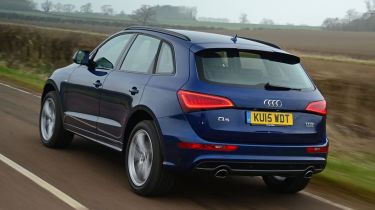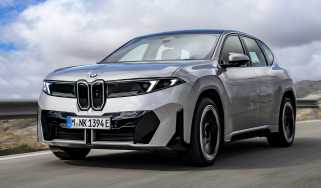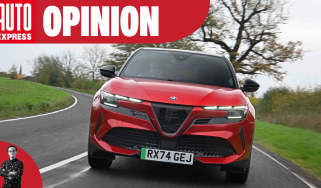Used Audi Q5 (Mk1, 2008-2016) review - How much will it cost?
It’s not cheap to buy and some versions are costly to run, but solid residuals and efficient diesels mean the Q5 won’t break the bank
Always considered one of the most desirable premium SUVs, strong residuals mean the Q5 will cost a little more to buy than mainstream models. However, keeping it going shouldn’t put a big dent in your wallet, thanks to a range of efficient engines and surprisingly affordable servicing.
Prices
When it was new the Q5 was famed for its rock-solid residual values, with all versions easily holding onto more than 50 percent of their value after three years. And while prices have come down, the Audi remains a desirable used choice and so demand remains high.
That’s a double-edged sword for used buyers and you’ll pay more for an equivalent Q5, but the good news is that you’ll lose less in depreciation when you come to sell. Diesel models are still the priciest, so if you’re looking for a bargain and don’t cover a high annual mileage then the petrol models are worth seeking out.
You can check out the latest used prices for the Audi Q5 Mk1 by checking out the live used listings on our Find a Car service, or by using our free car valuation tool.
Fuel economy and CO2 emissions
We'd definitely opt for a 2.0-litre TDI diesel model as they're powerful enough and also the cheapest Audi Q5s to buy and run. The entry-level 148bhp version is the more frugal choice, claiming 50.4mpg fuel economy, while CO2 emissions of 147g/km put it in road tax band F. That means owners will pay £170 a year in VED.
Used - available now
However, there’s a difference of less than 1mpg and only 1g/km between the entry-level 148bhp 2.0 TDI and the more powerful 187bhp version of the same engine. The latter claims 49.6mpg and 148g/km, so there’s no change in the tax bands and you won’t notice the difference in fuel economy in the real world. That said, cars built before the pre-2012 facelift with the 168bhp diesel have higher emissions of 175g/km, resulting in a larger £250 tax bill.
The same is true of the The 3.0-litre TDI diesel engine, which before 2012 claims 37.6mpg and emits 199g/km, meaning you’ll pay £315 for road fund licence. Post-facelift cars promise 47.1mpg and emit 158g/km of CO2, which leaves it in tax band G (only one band higher than the 2.0-litre diesels). So owners will still pay only £210 a year in VED – and that’s not bad given how quick it is.
Despite its towering performance potential, the SQ5 is nearly as efficient as the 3.0-litre TDI. It’s good for 42.8mpg and emits 174g/km of CO2, so it falls into band H for tax.
On paper it’s hard to recommend the 2.0-litre TFSI for running costs when you consider how good the diesels are at mixing economy and performance. Yet the petrol engine returns a very respectable 37.2mpg, which isn’t bad for such a large car. If you mainly do short journeys, then it’s well worth considering. That said, its 173g/km CO2 emissions mean road tax band H, which results in the same £250 bill as the SQ5. Watch out for earlier cars as well, as they claimed 195g/km, pushing the tax bill up to £315.
Running costs
Fixed (12 months or 9,000 miles) or variable servicing (up to 19,000 miles or two years) is available. Checks alternate between minor and major, at £180 and £345 for 2.0-litre cars; six-cylinder models cost £210 and £399.
A new cambelt (£595) is needed on 2.0-litre models every 140,000 miles or five years. The S tronic and Multitronic automatic transmissions require fresh fluid every 38,000 miles (£290). Fixed-price plans for Q5s less than 10 years old and with fewer than 115,000 miles cost £20 per month for 18 months or £360 for 2.0-litre cars, and £25 or £450 for six-cylinder versions.
Audi supplied all versions of the Q5 with a fairly standard three-year/60,000-mile warranty. That means that all first generation machines will no longer be covered by the manufacturer's guarantee.
Don’t expect low insurance costs from the Q5: it’s an SUV with a premium badge and powerful engines. The 2.0-litre TDI models start at group 22, and you’re looking at group 28 for the petrols. The 3.0-litre diesels fall into group 31, while the high-performance SQ5 sits in group 42. The SQ5 Plus is slightly more expensive to insure – sitting in group 44.
Yet while these insurance groups look quite high in isolation, premiums for the Audi are likely to work out quite a bit cheaper than for its chief rival, the BMW X3. This ranges from group 30 for a basic 2.0-litre diesel to group 43 for the top-spec xDrive35d M Sport model, so equivalent versions of the Q5 are consistently in lower insurance groups.







